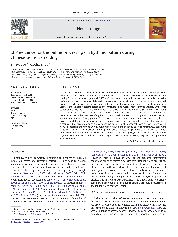摘要
Prosodic information has been found to have immediate impact upon spoken sentence comprehension. However, it is not clear to what extent such information could constrain neuro-cognitive processes ill silent reading. In this event-related potential (ERP) study. we investigate whether a particular prosodic constraint in Chinese. the rhythmic pattern of the verb-noun combination, affects sentence reading and whether neural markers of rhythmic pattern processing are similar to those of prosodic processing in the spoken domain. In Chinese, the rhythmic pattern refers to the combination of words with different lengths. with some combinations (e.g, the [2 + 1] pattern; numbers in brackets stand for the number of syllables of the verb and of the noun respectively) disallowed and some combinations (e g. [1 + 1] or [2 + 2]) preferred We manipulated the well-formedness of rhythmic pattern as well as the semantic congruency between the verb and the noun and we visually presented sentences, segment by Segment, to readers who were required to make acceptability judgment to each sentence Ill two experiments in which the verb and the noun were presented either separately or as one segment, we found that the abnormal rhythmic pattern evoked an N400-like effect in the 400- to 600-ms time window and a late positivity effect in semantically congruent sentences, however. the abnormal rhythmic pattern elicited a posterior positivity effect in the 300- to 500-ms time window in semantically Incongruent sentences. These findings suggest that information concerning rhythmic pattern is used rapidly and interactively to constrain semantic access/integration during Chinese sentence reading.
